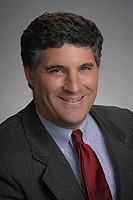Here are fives steps for struggling surgery centers to pull themselves out of debt.

1. Make the decision to change. This may seem like a simple first step, but it's crucial all surgeon investors commit to change. If your surgery center is in debt, investors must accept new guidance to really turnaround the center and make a difference.
"There has to be commitment from the investors to comply with recommendations from an outside source and a timeline activated to implement the changes necessary," says Daniel C. Daube, MD, director and CEO of Surgical Center of Excellence in Panama City, Fla. "If the center requires cash input from its investors, then it needs good management."
Sometimes the decision to change can be hard. Dr. Daube and his partners hired ASD Management to help them turnaround their situation. "I go through the fundamental operations of the center and tear them down if necessary, depending on what needs to be done," says Joe Zasa, co-founder of ASD Management. "We want to make sure there is a sound system in place and that all the staff and surgeons understand the system."
2. Identify the problem and seek solutions. The first step ASCs should take after making the commitment to change is identifying problem areas. Surgeons can hire an outside management company to assess their situation and work with them to mend weaknesses in center management.
"Go through a standard list of items that are common to centers that are having problems," says Dr. Daube. "In our case, the first problem we identified was a revenue problem. To solve that problem we had to renegotiate our contracts with insurance companies for payments. We saw value in working with a national management company because they have negotiating power; a single center has no denominator."
 Dr. Daube and his partners also found their method of tracking accounts receivable was flawed and they worked with their management company on a new system that was less expensive and more trustworthy. Finally, the surgeons tackled the business office systems and procedures with a complete overhaul and hired a company to manage the surgery center's collections.
Dr. Daube and his partners also found their method of tracking accounts receivable was flawed and they worked with their management company on a new system that was less expensive and more trustworthy. Finally, the surgeons tackled the business office systems and procedures with a complete overhaul and hired a company to manage the surgery center's collections.
3. Create a financial statement. Before working with their management company, Dr. Daube and his partners didn't conduct objective accounting. To remedy the situation they initiated periodic financial statements.
"Now we are looking at the financial statement quarterly," says Dr. Daube. "We have weekly accounts receivable reports and we look at those carefully as well. The sooner a group can identify the problem and change to improve it, the better they will be. The longer they delay the more difficult it will be to correct the problem."
4. Manage supply inventory. Supplies are a huge expense for surgery centers and organizing inventory can make a big difference. Ordering just enough so the center isn't over spending on devices can improve the bottom line, and keeping the supply closet organized makes locating them for cases more efficient.
"We had no consistent method for looking up inventory, so that had to be implemented," says Dr. Daube. "Making these changes was very easy because Joe did a good job of communicating well with the staff and surgeons so it was a fairly seamless process."
Staff members were further encouraged to become involved with an incentive program that allowed them to share in the surgery center's success.
"We created an incentive plan for the staff with the reward based on net profits," says Dr. Daube. "The criteria under which employees would receive their bonus had to do with their job descriptions. Although this wasn't an operational recommendation, for the first time since opening we were given a concept of the case numbers to break even, so everyone had a real practical goal."
5. Add new physicians. If the market is right, you can add physicians to the surgery center once the financials are in order. Bringing on more physicians will increase patient volume and revenue at the end of the day.
"I worked with a surgery center that lost over a million dollars one year, and in the year after we started working with them they made money in three of the nine months," says Mr. Zasa. "The physicians bought into the program and now are bringing new people onboard because the center is thriving. The new volume is profitable."
When adding new surgeons, it's important to make sure they have the right attitude for maintaining success at the ASC. "It's like a football team," says Mr. Zasa. "Recruit the right players and coaches all buying into the goals of the team."
More Articles on Surgery Centers:
ASC Reimbursement Trends: On the Up and Up
Complying With Quality Reporting Requirements: A How-To Guide for ASCs
10 Biggest Factors in Negative Cash Flow for ASCs & How to Turn Them Around

1. Make the decision to change. This may seem like a simple first step, but it's crucial all surgeon investors commit to change. If your surgery center is in debt, investors must accept new guidance to really turnaround the center and make a difference.
"There has to be commitment from the investors to comply with recommendations from an outside source and a timeline activated to implement the changes necessary," says Daniel C. Daube, MD, director and CEO of Surgical Center of Excellence in Panama City, Fla. "If the center requires cash input from its investors, then it needs good management."
Sometimes the decision to change can be hard. Dr. Daube and his partners hired ASD Management to help them turnaround their situation. "I go through the fundamental operations of the center and tear them down if necessary, depending on what needs to be done," says Joe Zasa, co-founder of ASD Management. "We want to make sure there is a sound system in place and that all the staff and surgeons understand the system."
2. Identify the problem and seek solutions. The first step ASCs should take after making the commitment to change is identifying problem areas. Surgeons can hire an outside management company to assess their situation and work with them to mend weaknesses in center management.
"Go through a standard list of items that are common to centers that are having problems," says Dr. Daube. "In our case, the first problem we identified was a revenue problem. To solve that problem we had to renegotiate our contracts with insurance companies for payments. We saw value in working with a national management company because they have negotiating power; a single center has no denominator."
 Dr. Daube and his partners also found their method of tracking accounts receivable was flawed and they worked with their management company on a new system that was less expensive and more trustworthy. Finally, the surgeons tackled the business office systems and procedures with a complete overhaul and hired a company to manage the surgery center's collections.
Dr. Daube and his partners also found their method of tracking accounts receivable was flawed and they worked with their management company on a new system that was less expensive and more trustworthy. Finally, the surgeons tackled the business office systems and procedures with a complete overhaul and hired a company to manage the surgery center's collections.3. Create a financial statement. Before working with their management company, Dr. Daube and his partners didn't conduct objective accounting. To remedy the situation they initiated periodic financial statements.
"Now we are looking at the financial statement quarterly," says Dr. Daube. "We have weekly accounts receivable reports and we look at those carefully as well. The sooner a group can identify the problem and change to improve it, the better they will be. The longer they delay the more difficult it will be to correct the problem."
4. Manage supply inventory. Supplies are a huge expense for surgery centers and organizing inventory can make a big difference. Ordering just enough so the center isn't over spending on devices can improve the bottom line, and keeping the supply closet organized makes locating them for cases more efficient.
"We had no consistent method for looking up inventory, so that had to be implemented," says Dr. Daube. "Making these changes was very easy because Joe did a good job of communicating well with the staff and surgeons so it was a fairly seamless process."
Staff members were further encouraged to become involved with an incentive program that allowed them to share in the surgery center's success.
"We created an incentive plan for the staff with the reward based on net profits," says Dr. Daube. "The criteria under which employees would receive their bonus had to do with their job descriptions. Although this wasn't an operational recommendation, for the first time since opening we were given a concept of the case numbers to break even, so everyone had a real practical goal."
5. Add new physicians. If the market is right, you can add physicians to the surgery center once the financials are in order. Bringing on more physicians will increase patient volume and revenue at the end of the day.
"I worked with a surgery center that lost over a million dollars one year, and in the year after we started working with them they made money in three of the nine months," says Mr. Zasa. "The physicians bought into the program and now are bringing new people onboard because the center is thriving. The new volume is profitable."
When adding new surgeons, it's important to make sure they have the right attitude for maintaining success at the ASC. "It's like a football team," says Mr. Zasa. "Recruit the right players and coaches all buying into the goals of the team."
More Articles on Surgery Centers:
ASC Reimbursement Trends: On the Up and Up
Complying With Quality Reporting Requirements: A How-To Guide for ASCs
10 Biggest Factors in Negative Cash Flow for ASCs & How to Turn Them Around

